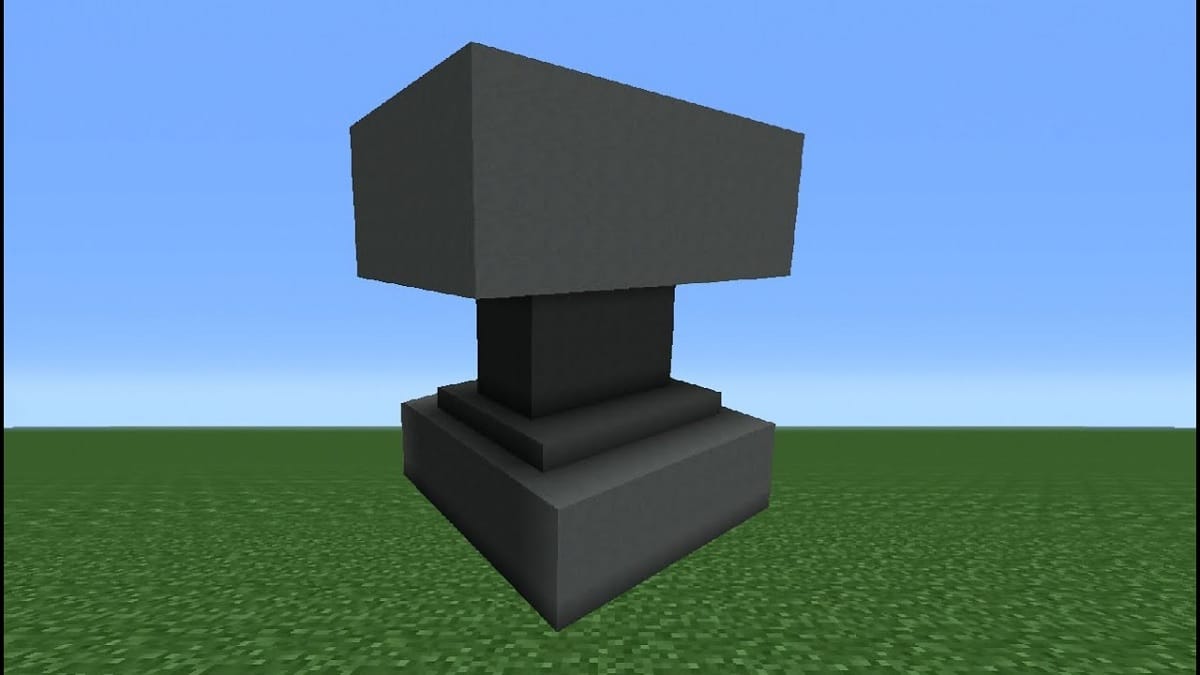
Minecraft is one of the most popular games worldwide, a popularity that has been maintained despite having been on the market for many years. One of the keys in this game is its wide universe, where we find a multitude of elements, many of them new. One of the elements or objects that we find in Minecraft is the anvil.
Possibly many of you have heard or seen something about the anvil in Minecraft. Next we are going to tell you everything you need to know about it, from what it is, the way in which we can craft it or what it is for. In this way, when the time comes when you meet the anvil in the game, you will already have all the information about it in advance.
The list of objects that we find in the game is huge. That is why concepts that are new to us will always emerge. This may be the case with this anvil for many players. When we are starting to play this title, it is good to know more about the various objects that we are going to find in the future, as well as how we can craft them, if necessary. This is something that applies to all versions of the popular game currently available. So any of you can use it.
What is the anvil and what is it for?
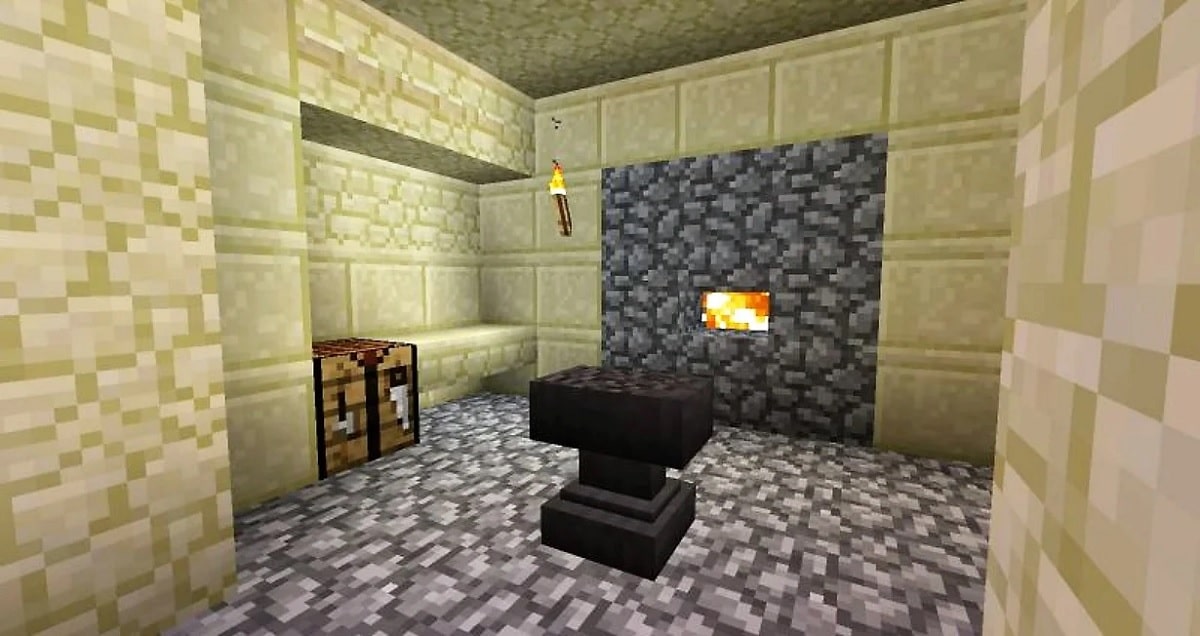
The anvil is a type of block that we find in Minecraft that is used to repair and rename items without losing their enchantments. Additionally, these anvils can also be used in-game to enchant items with Enchanted Books. These are the two main uses for these blocks in the game.
Anvils are something that is used in the game to repair tools and armor, as well as to enchant objects with a charming book. Another of the functions available in them is the possibility of renaming or combining them. There are several functions that they give us, as you can see, although the use of all these functions on the anvils is something that will cost both experience points and materials.
As these anvils are used in the game, they will deteriorate. This is something that happens progressively, so that they will deteriorate until they are finally destroyed. Typically, they last for about 24 uses, which is equivalent to about 1,3 ingots of iron per use of the anvil. An anvil in Minecraft is something that is affected by gravity. In addition, the pistons cannot be pushed or retracted, but they can fall. They cause damage if they fall on a person or creature. The higher the altitude, the more damage will be caused in this sense.
How to craft an anvil in Minecraft
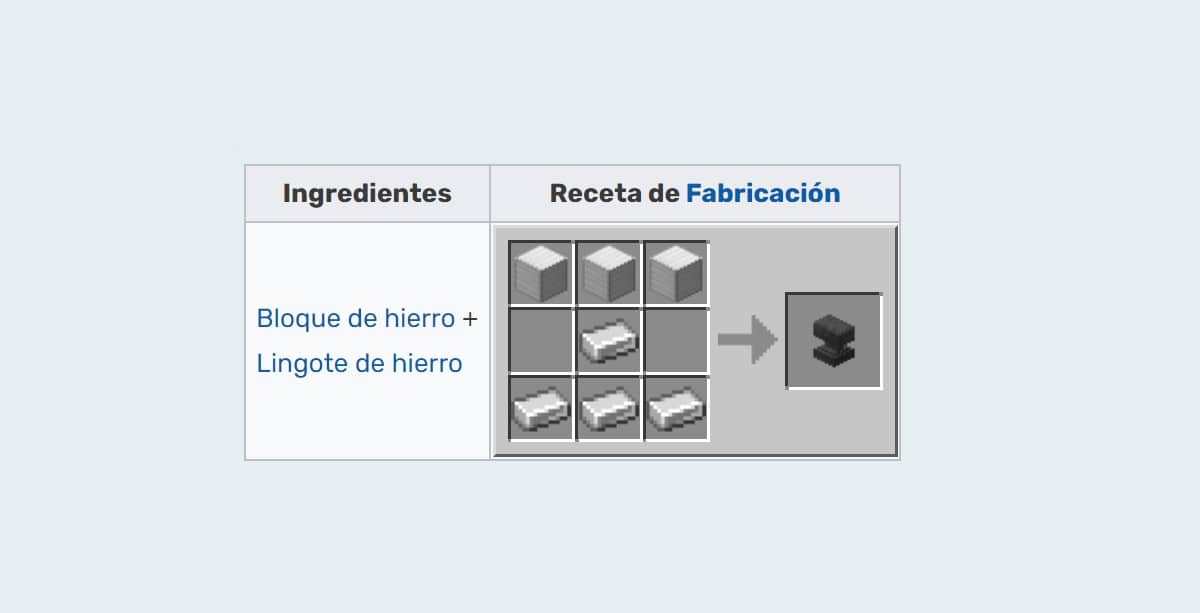
The anvil is something that can be chopped with iron pickaxe. If it is not done with that peak it will be destroyed. For crafting an anvil in Minecraft we will need two ingredients: iron block (three units) and iron ingot (four units). We have to place them in the way we can see in the photo above and in this way we are going to get this anvil in our account in the game. The recipe is quite simple, as you can see.
Although the doubt of many users is the way in which we can obtain that iron block and iron ingots. For this reason, we also tell you the way in which we get to these ingredients or materials, which are the ones that we are going to use later to craft this anvil in Minecraft.
Iron ingots
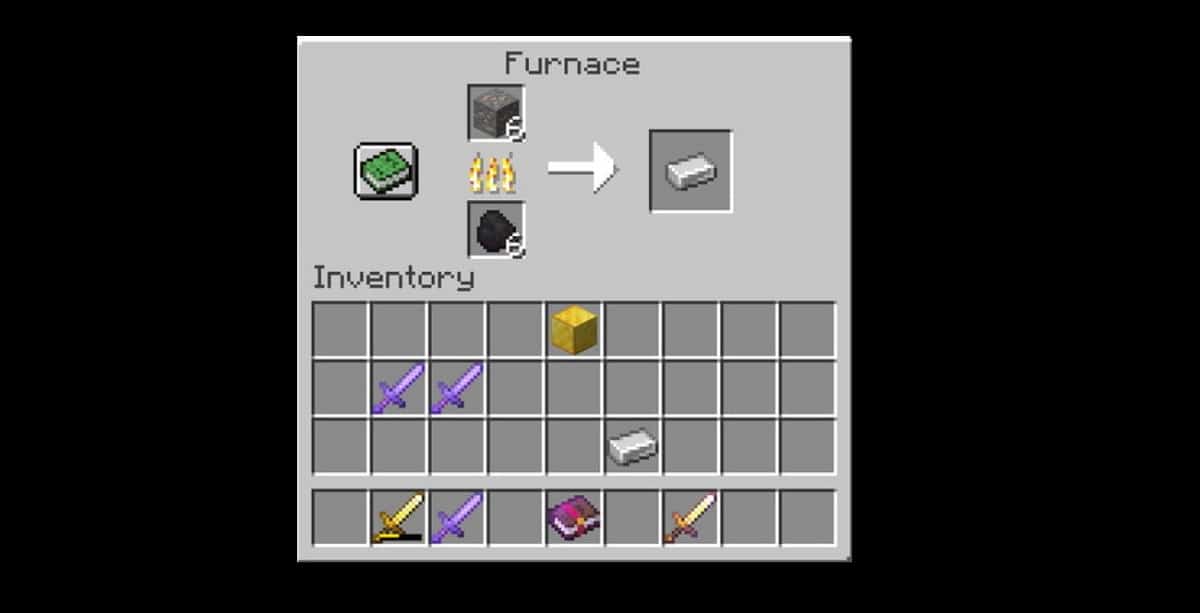
To obtain iron ingots in our account in the game, we have to first melt the iron ore. Iron is a mineral that we will find between 5 and 25 blocks below the surfaceSo we have to get this mineral first. The blocks have golden and light brown points, so that is what we have to look for to detect and identify them at all times when we are looking.
Once we have obtained this mineral, we have to go to the furnace where we are going to place it in the upper box. In the lower box of the oven we must place a fuel (it does not matter which one is used in this case). So we have to drag the iron ingot that goes into our inventory as a result. If you want to speed up the process, you can add different iron and fuel blocks in the furnace, so that different ingots will be produced at the same time.
You will need to create 31 iron ingots: 27 to make three iron blocks (nine for each one) and four more to make the anvil, as we have shown you in the previous section in this case.
Iron blocks
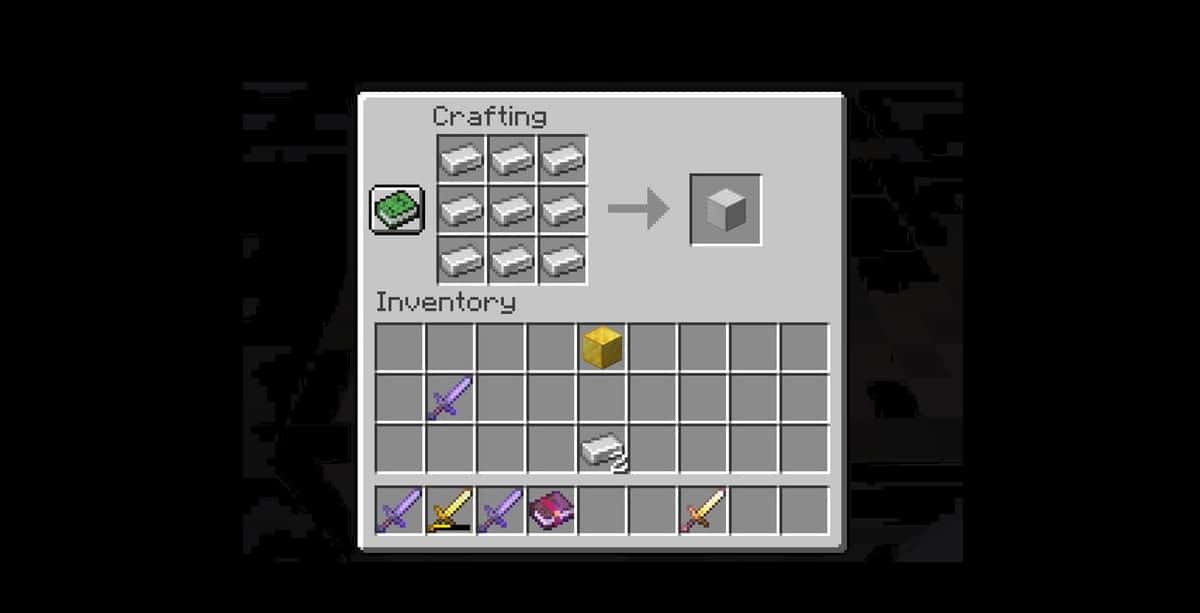
The other object we need to craft that anvil in Minecraft is the iron block, of which we are going to need three units in total. Many users want to know the way in which it is possible to obtain those blocks. This is something we will do using the artboard in the well-known game.
We have to place an iron ingot in each of the nine spaces of the grid, so we need to make sure we have enough bullion in inventory to do so. By doing this, an iron block will be generated, which we will then drag into our inventory. In the crafting recipe for the anvil we have seen that we need a total of three iron blocks. It is therefore necessary that we repeat this process three times, so that we have those three blocks. As we have said before, it will therefore be necessary to have those 27 ingots for this process.
Repair and name objects
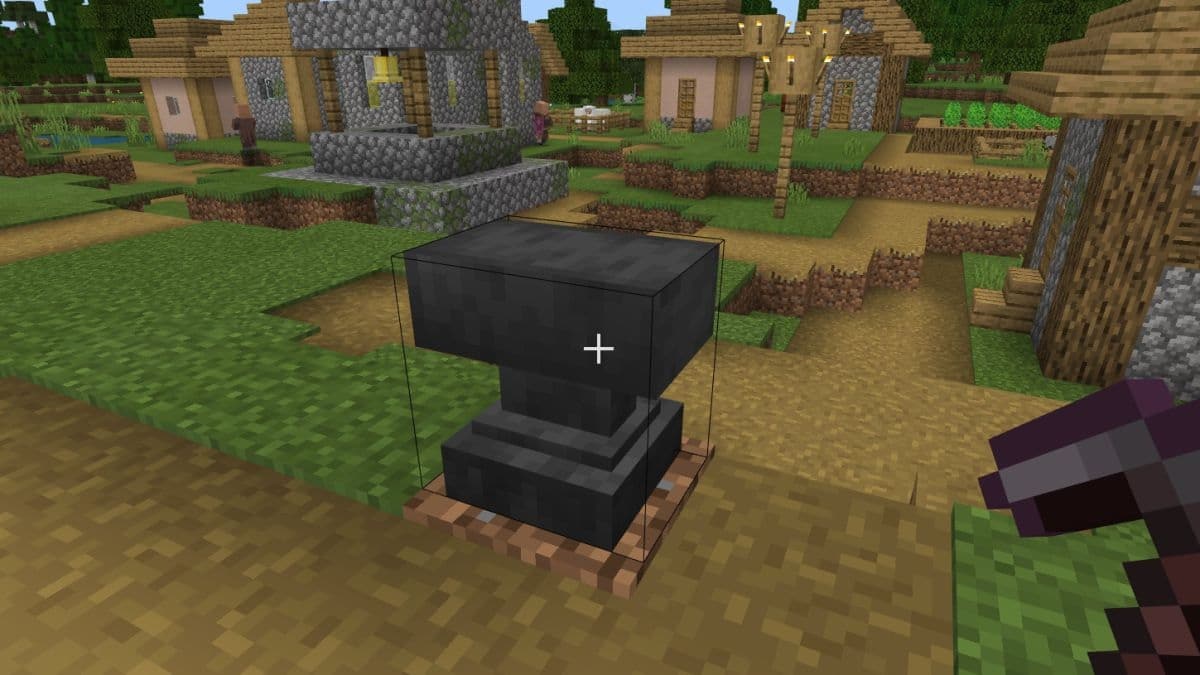
As we have told you before, one of the functions of an anvil in Minecraft is to repair and name objects. In this sense, the game gives us two modes or options when it comes to repair. On the one hand, we are given the possibility of combining two similar objects, which will result in the enchantments being preserved and can receive new ones from that object that has been sacrificed. So it is something that can be of help in many cases.
On the other hand, we are allowed to use materials (iron ingots for those iron objects or diamonds for diamond objects, for example). In this case, each of those materials will repair 25% of the maximum. So it is another option that can help us in many situations in Minecraft. Although it is recommended that we go to resort to it when it is really necessary, it has to be used wisely.
In the case of naming or renaming, this anvil can be used to rename any object in the game. There is no type of limitation in the use of this function or characteristic of the same. So whenever you want, you can change the name using this anvil in your account.
How to repair objects with the anvil

One of the doubts of many users is how to use the anvil to repair objects in Minecraft. To repair an object we have to place it in the left box. On the right we have to place an object that we are going to sacrifice in this case, or the material that we are going to use for its repair. In the interface we are going to indicate the amount of levels we need to be able to repair that object. While in the third box we can see the result, showing the enchantments and durability. This repair is completed when we remove the item from the third box and put it in inventory.
If we have chosen the repair with materials, it is good to know that it does not work with all objects. It works with the vast majority, but not with all. This is generally something that works for items with their material in the default name, like an iron pickaxe. Although it does not work with others such as scissors or bows. A special case is chain armor, which can be repaired using iron ingots. As we have told you before, the use of a material will repair 25% of the maximum durability of the object. So it is good that we choose those objects where it is worthwhile, because at no time are we going to obtain a total repair of it, but it is going to be limited to that percentage.
In addition, it must be borne in mind that experience points will be extracted at all times when we resort to this process. In fact, every repair we make after the first one, will double the cost of experience. This is something that will undoubtedly have an impact on our decisions, so it is important to choose well when to resort to repair. Also because we don't want to waste an anvil in Minecraft.